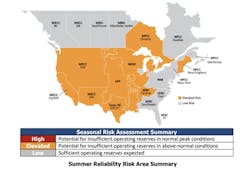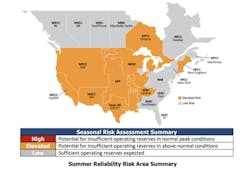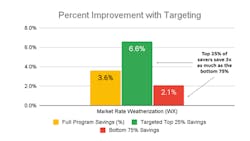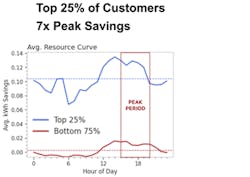As the electric grid accelerates toward decarbonization, reliability is an increasing challenge. Historically, adding power plants and transmission and distribution has been sufficient to keep the lights on, but with the penetration of renewables, it is increasingly critical that we enable demand management as a mechanism to close the gap between demand and supply.
The problem is more urgent than ever. The North American Electric Reliability Corporation (NERC) recently predicted that two-thirds of North America is at risk of falling short of supply if temperatures spike in the summer of 2023.
What is Targeting?
Customer targeting is a way to identify customers for program outreach who will benefit most from a program intervention using meter data. The resulting analysis allows utilities to optimize offerings and maximize savings potential to meet carbon reduction, grid stability, equity, and other goals and to ensure that customers see real savings on their bills.
The Project
The project was designed to scientifically test the predictive capacity of Recurve’s customer targeting methods to identify the potential for customers to achieve cost-effective outcomes from ComEd programs. The analysis was conducted across four ComEd programs: a residential market rate weatherization program (Market Rate WX), a residential income eligible weatherization program (Income Eligible WX), a residential early air conditioning (AC) replacement program (CAC), and a commercial AC tune-up program (TUNE; see section 2.3 for program details).
The study was conducted using a rigorous experimental design that split program participants into two groups. Recurve used group A to develop targeting strategies, which were then tested on the group B participants. The targeting features are derived by analyzing pre-program customer usage patterns and the recommended strategies resulting from assessing the correlation of these features to metered savings results.
The Results
Recurve’s analysis of ComEd’s Market-Rate Weatherization Program (WX) showed that 25 percent of customers save three times as much as the other 75 percent, and it was possible to identify parameters that would predict who those customers were. Customers in the bottom quartile saw no observable savings.
In other words, by focusing on the highest potential customers, a program could conceivably triple the savings it delivers while avoiding customers who will see no savings.
The team found similar results in the three other programs, with the top 25 percent of customers driving 2 to 4.5 times the average savings depending on the program.
Targeting for Peak Savings
While improving total savings is valuable, reducing consumption during peak hours is even more important.
Recommendations for Utilities
Once program administrators identify which customers will achieve significant savings and will be cost-effective for ratepayers as a program, it is possible to:
- Target customers who will have good outcomes and be cost-effective for the program.
- Market directly to customers who need the solutions and will benefit. For example, marketing could use targeting data to focus on customers with high summer usage who would specifically benefit from AC and insulation.
- Give trade allies the information they need to target high-impact customers effectively.
Working with utilities, program managers, and aggregator trade allies to help them leverage customer data to identify and engage high-potential customers, customer-targeting can optimize existing programs and is a key component of our FLEXmarket virtual power plant system.
In Part 2, we will look at real-world examples of how Franklin Energy deployed customer targeting to optimize a pay-for-performance program for a large California utility and in Part 3, how Arizona Public Service uses targeting analysis to optimize its efficiency programs and help contractors be more effective.
Matt Golden is CEO of Recurve, which provides platforms that measure demand flexibility to utilities and aggregators, based on the open-source OpenEEmeter. Matt has provided his expertise on demand-side technologies, markets, and finance as a serial entrepreneur and policy advocate. Previously, Matt helped create Sustainable Spaces, later renamed Recurve (1.0) a tablet-based energy auditing software for the home performance industry built off his experience as a licensed contractor who audited and retrofitted thousands of California homes.
About the Author
Matt Golden
Matt Golden is CEO of Recurve, which provides platforms that measure demand flexibility to utilities and aggregators, based on the open-source OpenEEmeter. He also led the Investor Confidence Project at Green Building Certification Inc. (GBCI) and was previously the founder of an energy-auditing software startup and retrofit contractor, which was also called Recurve.



